ATX Power Supply: is a minimum Load required on each supply?
I would suggest that the answer is still ...YES.
However the answer is more complex if you delve into the individual supplies.
Most supplies will meet the minimum Form Factors spec that @Jim quoted in the comments. However many of the top tier ATX supplies far exceed this spec.
In particular many of the higher powered supplies (500 - 750W and above) have now separated the +12 and +5 converters so they don't interact (co-regulated +12 and +5 supplies are common on lower power supply units (250 - 400W range). For lower power units I'd always recommend you have some pre-load, but it does not matter whether it is on the 12V or 5V supply if they are co-regulated supplies.
To begin to understand what might happen if you have no load, consider this report from TomsHardware from 2011. They show testing of a larger Corsair 550W power supply and compare to other units available at that time.
Notice that they did NOT test down to zero amps but the supply stayed well within the expected ATX regulation limits of +/-5% across a broad range of load current. This unit along with many of the comparison units would benefit from some pre-load. I'd suggest that a minimum of 3-5W load would be adequate in most cases.

Compare the charts from the Corsair unit made in 2011 to that of a bang up to date Seasonic SSR-500SGX, newly updated in 2019.

Again the unit is not tested down to zero load, so even though it's regulation is amazing compared to the Corsair, I'd still suggest that a minimum load be attached.
It's also worth noting that the Seasonic appears to be using co-regulation of the 5v and 3.3V supplies (notice the little bump in the output voltage at about 40W which is a giveaway the supplies are coupled).
The biggest potential problem using an ATX power supply as a general purpose bench supply is that you may have very sudden sharp reductions in power supply current when you disconnect a load. Since the switching regulators are working at some (typically fixed) frequency, you may suddenly turn off the load just when the supply is dumping a large amount of energy into the output cap. This could result in a voltage spike, enough to trip the over voltage sensors.
The resistive load you put on the supply helps ameliorate this problem.
So to sum up: If you are using an ATX supply as a bench supply it is good practice to apply a minimum load to the supplies. You could make this a dynamic load and sense any voltage spike, but this complicates what you wanted as a simple solution. Just using a load resistor is certainly easy, and dissipating say 20W across the supplies an easily implemented solution.
Exactly how much load you need for a given supply depends on the design, but if you measure a supply with no load on it and the output voltages are above +2% of nominal, I would definitely use a pre-load resistor.

